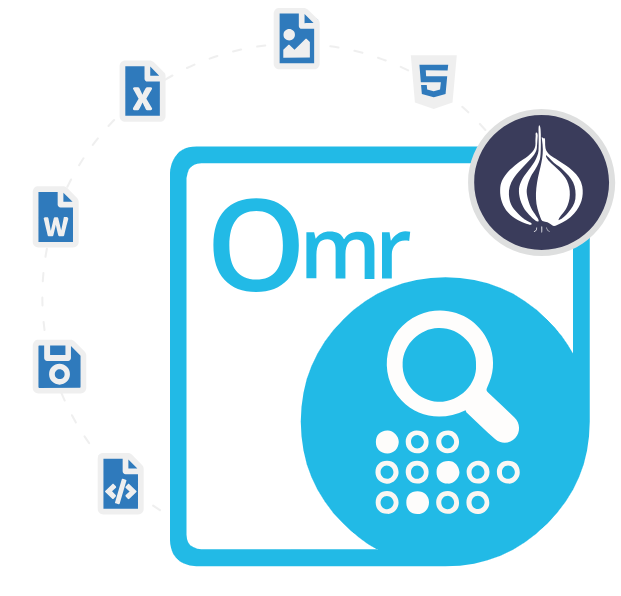
Aspose.OMR Cloud SDK for Perl
Perl REST SDK to Recognize & Extract Data from Hand-filled Forms
Perl REST API for Incorporating OMR Capabilities into Their Perl Applications to Recognize, Extract & Export Data from Scanned Photos, Images & Hand-filled Forms.
In the world of data extraction and analysis, Optical Mark Recognition (OMR) plays a pivotal role in effortlessly converting paper-based forms into digital data. Aspose.OMR Cloud SDK for Perl emerges as a powerful tool, offering a seamless integration to harness the potential of OMR technology within Perl applications. The SDK is designed to be scalable and flexible, allowing software developers to handle varying OMR requirements. Whether you are processing a small number of forms or dealing with a large-scale data extraction project, the Cloud SDK for Perl adapts to your needs.
Aspose.OMR Cloud SDK for Perl simplifies the integration of OMR capabilities into Perl applications, providing software developers with a robust set of tools for handling optical mark recognition tasks. The SDK enables Perl developers to seamlessly work with various OMR operations, such as scanning, analyzing, and extracting data from OMR sheets. The SDK is designed to be cross-platform, offering flexibility for software developers working in diverse environments. Security is a top priority, and the SDK ensures the confidentiality and integrity of processed data. Perl Developers can trust that sensitive information is handled with the utmost care.
Aspose.OMR Cloud SDK for Perl leverages cutting-edge OMR algorithms, ensuring high accuracy in recognizing and extracting data from OMR sheets. This is crucial for applications where precision is paramount, such as exams, surveys, or any form-based data collection. The Perl SDK stands out as a reliable and feature-rich solution for incorporating OMR capabilities into Perl applications. With its seamless integration, advanced algorithms, cross-platform compatibility, customizable options, and security measures, developers can confidently leverage the power of OMR into their projects.
Getting Started with Aspose.OMR Cloud SDK for Perl
The recommend way to use Aspose.OMR Cloud SDK for Perl is via GitHub. Please use the following command for a smooth installation.
Install Aspose.OMR Cloud SDK for Perl via GitHub.
git clone https://github.com/aspose-omr-cloud/aspose-omr-cloud-perl.git You can download the library directly from Aspose.OMR Cloud SDK for Perl product page
Recognize & Extract Data via Perl REST API
The Aspose.OMR Cloud SDK for Perl makes it easy for software developers to extract and recognize data from OMR sheets inside their Perl applications. The SDK's powerful features and customization options provide a flexible and efficient solution for incorporating OMR capabilities into your projects. Extracting and recognizing data using the Cloud SDK involves a series of steps, such as setting up your development environment, integrating the SDK, configuring OMR processing options, and extracting data from OMR sheets. The following example demonstrates how software developers can achieve data extraction inside their own Perl applications.
How to Recognize and Extract Data from OMR Sheets using Perl Code?
# integrate the Aspose.OMR Cloud SDK
use AsposeOmrCloud::OmrApi;
my $omr_api = AsposeOmrCloud::OmrApi->new(
app_key => 'your_app_key',
app_sid => 'your_app_sid',
);
# If needed, customize OMR processing options
my $settings = {
'some_option' => 'some_value',
# Add more customization options as needed
};
# Perform OMR processing
my $result = $omr_api->post_run_omr_task(file => '/path/to/omr-sheet.png', settings => $settings);
# Access the extracted data
my $data = $result->{body}->{result}->{response}->{response_data};
# Display or further process the extracted data
print "Extracted Data:\n", Dumper($data);
Generate OMR Template via Ruby API
Aspose.OMR Cloud SDK for Perl allows software developers to generating an OMR (Optical Mark Recognition) template inside their Ruby applications. The SDK facilitates template creation, enabling developers to define the structure of the sheets they want to process. This template-driven approach enhances customization and accommodates diverse OMR requirements. Once the script runs successfully, you can verify the created OMR template on the Aspose Cloud dashboard or download it for local use. The following example shows, how software developers can generates an OMR template using Ruby code.
How to Generate an OMR Template using Ruby Code?
use strict;
use warnings;
use AsposeOMRCloud;
# Set your App SID and App Key
my $app_sid = 'your_app_sid';
my $app_key = 'your_app_key';
# Create an instance of the OMR API
my $api = AsposeOMRCloud::OmrApi->new(
app_sid => $app_sid,
app_key => $app_key
);
# Define template parameters
my $template_name = 'example_template';
my $template_width = 800;
my $template_height = 1200;
# Create OMR template
my $response = $api->post_create_template(
name => $template_name,
width => $template_width,
height => $template_height
);
# Check if the template is created successfully
if ($response->{'Code'} eq 200) {
print "OMR Template '$template_name' created successfully.\n";
} else {
print "Error creating OMR Template: " . $response->{'Message'} . "\n";
}
Security Measures and Scalability
Security is a top priority, and Aspose.OMR Cloud SDK for Perl ensures the confidentiality and integrity of processed data. Software Developers can trust that sensitive information is handled with the utmost care. Whether processing a handful of forms or handling large-scale data extraction projects, the SDK scales effortlessly. This scalability makes it suitable for a wide range of applications, from small businesses to enterprise-level projects.
